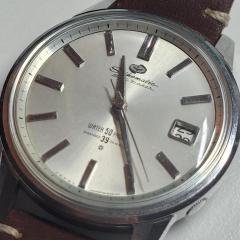Newbie - Watch Repair Advice
-
Recently Browsing
- No registered users viewing this page.
-
Topics
-
Posts
-
Use probably the same key as you wound it with - on the end of the cannon pinion is a square that the minute hand is mounted to. You just need to turn the square, which will overcome the cannon pinion's friction and set the hands. That said, this could be the reason your wheel and pinion were separated and thread damaged. If the cannon pinion had been rusted or seized on and it was turned, it could have damaged the connection between the pinion and wheel. If it felt like your cannon pinion could turn on the center wheel arbor before and there is some grease under it, this should not be a problem.
-
I've gone the threadlocker route having tried the material insert approach without success. The watch runs but I'm chary about winding it more than a turn or so in case the 'repair' gives way; still, there's an element of satisfaction in getting it going at all as it's a single bridge/plate design which I could only assemble dial side up & then flip over in order to be able to insert the 3 securing screws. The reassembly took a number of attempts over many hours but at least I got considerable manipulation practice & the experience will come in useful in future. I'm now faced with my ignorance about how to manually set the the time as this key-wound Waltham pocket watch doesn't have the usual pull-out stem facility. All I can think of doing is to adjust the regulator arm until it catches up with the current time & then revert to the central position.....
-
So the crown should be a 0.9mm thread as you've ordered. How do you know the thread size is wrong if you've not removed the broken stem yet?
-
You'll need to be extra careful with the Citizen as Information along with Parts and Donors are pretty much none existing. You'll probably end up having to use a stem extender, that's hoping there's enough stem left in the movement.
-
By Embezelled · Posted
Thank you! That's immensely helpful. I appreciate the trouble you've taken. The initial hiccup aside, I do hope to treat this watch with great care and respect. I've certainly learned one thing not to do, and also just the general need to start out very slowly and very carefully.
-





Recommended Posts